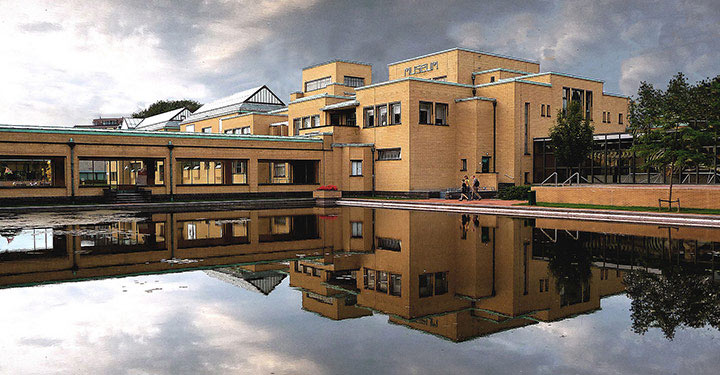When one of the most respected museums of modern art in northern Europe calls and asks for your support and advice on staging a new international exhibition, you know your research is having impact and that your ideas have been validated.
For Professor Michael White that moment came when he got a call from Hans Janssen, curator of the Mondrian collection (including the controversial $40 million canvas Victory Boogie Woogie ) at the Gemeentemuseum in The Hague.
Janssen had been so impressed by Professor White’s work on Mondrian and the De Stijl group in the Netherlands – which challenged conventional perceptions of the painter and the movement – that he wanted to incorporate his ideas in a new exhibition.
Community art
Professor White said: “The key message from my research is that works of art that we tend to think of as very elitist and abstract actually had a very direct connection to projects that touched most people’s lives in Holland at the time – from major social housing initiatives through to the design of the first fitted kitchens, and the development of modern advertising concepts.”
White and Janssen quickly became close collaborators as they worked on an exhibition that would show the De Stijl group in a very different light. Scheduled to run for five years, the exhibition was so successful that it has been extended indefinitely. With more than 250,000 visitors from across the Netherlands , the museum realised it had a significant success on its hands..
“I think there are three reasons for the success of the exhibition,” Professor White said. “First, it brings the diverse work of De Stijl together in one place for the first time. Second, its shows the very real and tangible contribution its members made to the life of everyday people in the Netherlands – what in Dutch, they call gemeenschapskunst,which is often translated as community art.”
Shared heritage
But the third reason extends far beyond the museum to the national politics of the Netherlands. In 2007 the government introduced the Cultural Canon of the Netherlands – 50 events, artefacts and artists that would guide school teaching and create a sense of shared heritage and history: the De Stijl exhibition is part of that process.
As a result, school groups visit the exhibition every day, and it is estimated that around 15,000 pupils and 10,000 adults a year take part in one of the museum’s workshops and events which are linked to the De Stijl collection. But its influence has spread beyond the Netherlands.
Just prior to the opening in The Hague, De Stijl exhibitions were held at the Centre Pompidou in Paris, the Lenbachhause in Munich, and the Complesso del Vittoriano in Rome, all of which drew on the support of the Gemeentemuseum. Professor White was the only author to contribute to all three exhibitions – impact indeed.
The text of this article is licensed under a Creative Commons Licence. You're free to republish it, as long as you link back to this page and credit us.





